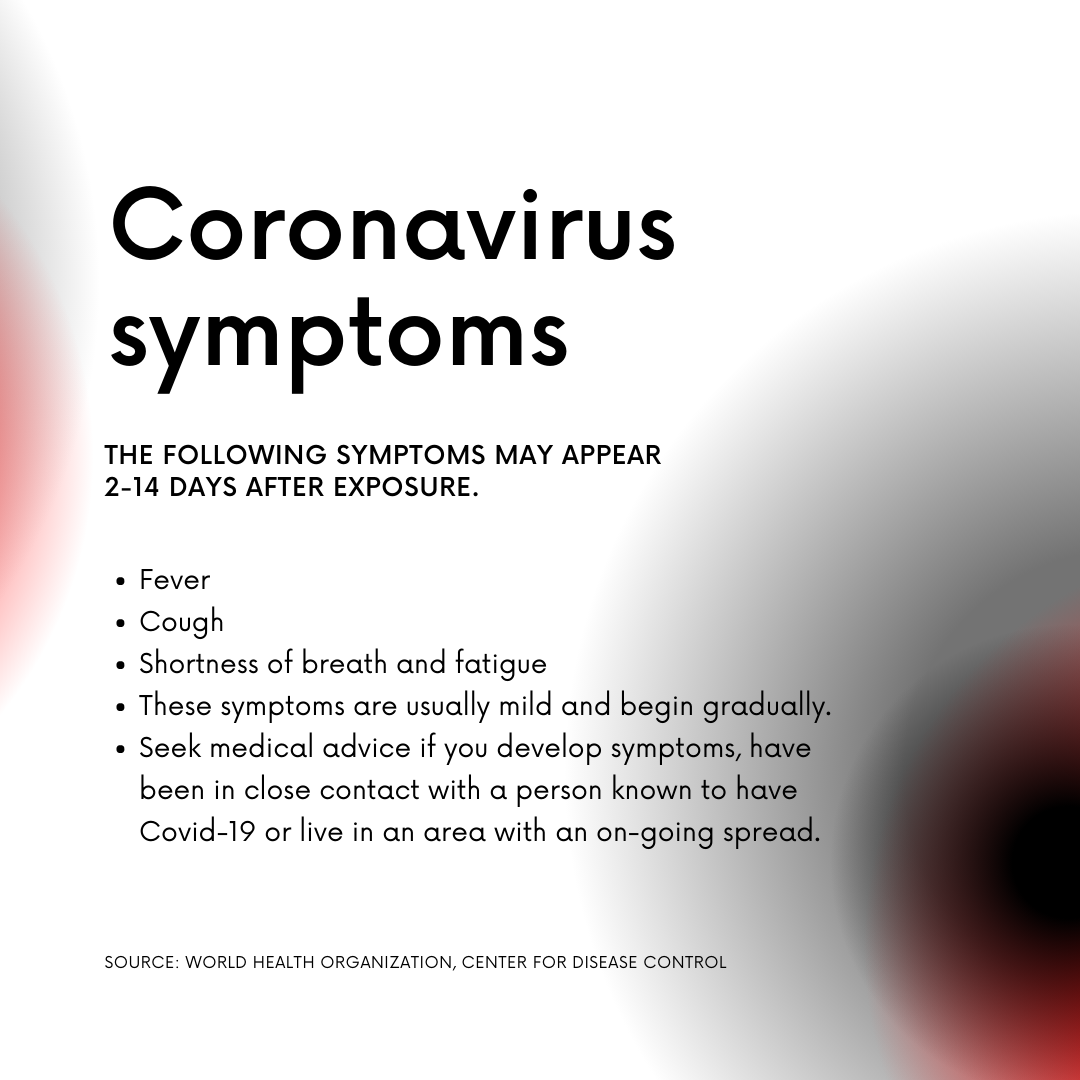The disease caused by coronavirus is called COVID-19. The WHO recently declared the COVID-19 crisis a pandemic. Ebola and Zika outbreaks were classified as international emergencies, not pandemics. This classification causes a heightened level of alarm, and governments and health organizations worldwide are scrambling to assuage the impact of this highly contagious disease. Public and private research institutions are rushing to discover as much information about this particular strain of coronavirus and inform the public of ways they can protect themselves, loved ones, and their communities in general.
How did this happen? What are causes of coronavirus?
 Coronavirus strains have been around, usually affecting various animal populations exclusively, for a long time. This particular strain of coronavirus, which causes COVID-19, originated in Wuhan, China in December 2019. Since this strain is so new, there isn’t much, if any, scientific research about it. But we can all still do our part to take common sense preventative measures to contain it from spreading, especially to certain especially vulnerable members of society. Studying outbreaks of other infectious disease provides helpful insights and strategies for striving to minimize the impact of COVID-19, as much as humanly possible.
Coronavirus strains have been around, usually affecting various animal populations exclusively, for a long time. This particular strain of coronavirus, which causes COVID-19, originated in Wuhan, China in December 2019. Since this strain is so new, there isn’t much, if any, scientific research about it. But we can all still do our part to take common sense preventative measures to contain it from spreading, especially to certain especially vulnerable members of society. Studying outbreaks of other infectious disease provides helpful insights and strategies for striving to minimize the impact of COVID-19, as much as humanly possible.
What’s the difference between a pandemic and an epidemic?
The words pandemic and epidemic are very similar-sounding, but their meanings are distinct. According to the CDC, the Centers for Disease Control, an epidemic is when there is an increase, often sudden, in instances of a disease, above a normal level, for a certain population. An endemic level of instances of a disease is the usual amount of cases present during normal circumstances. For instance, every year, there is an endemic level of flu infections.
Pandemic, on the other hand, refers to an epidemic that has spread to a whole range of countries or continents, affecting a large amount of people. A spotlight has been shown on the field of epidemiology as news reports detail the unfolding of the coronavirus pandemic across the world over the last few months. Epidemiology is the study of the causes of health conditions, including diseases, in certain populations. Today, epidemiologists are studying multiple variables in an effort to prevent the spread of COVID-19 all over the world.
How COVID-19 spreads – causes of coronavirus
In some ways, COVID-19 is similar to other viruses like the flu. It is spread through those infected with it coughing and sneezing, which releases infected water-droplets into the air, where they spread to other people. When people breathe in air or touch surfaces that have COVID-19 water droplets in them, and then touch their face, mouth, or nose, the microbes enter their bodies, and they get infected with the virus. The incubation period of coronavirus lasts between 2-14 days. Some people don’t have symptoms (or have very mild symptoms), and may unwittingly pass it on to others. Since the incubation period of coronavirus is so long, coronavirus news updates indicate that many schools and workplaces are closing down temporarily for a week or more in order to prevent its spread.
What are the symptoms of coronavirus? What are some coronavirus signs and symptoms?
As previously mentioned, symptoms of coronavirus include coughing, sneezing, fever, and shortness of breath (usually mild respiratory issues). People who have asthma and other respiratory issues may be at greater risk if they contract COVID-19. Novel coronavirus, and the diseased caused by coronavirus (COVID-19), can only be conclusively diagnosed through a laboratory test.

Let’s conduct a coronavirus risk assessment
What are coronavirus risk factors? Is this a cause for panic? Let’s strive to separate coronavirus facts vs. fiction in this section. Coronavirus news updates often include plenty of fear-mongering tactics in order to increase viewership. Coronavirus facts and fears people have about it are often in conflict. Let’s tune into the facts with a clear-headed coronavirus risk assessement. Though it’s important to take proactive steps to reduce infection rates around the world, coronavirus symptoms in humans are generally mild for otherwise healthy people with strong immune systems. The Johns Hopkins Institute has a helpful counter that’s frequently updated. As of March 13 at 9:15am EST, this count indicated that there were 135,467 cases of COVID-19, 4,981 total deaths, and 69,645 total recovered (link 6). This means that while it is a serious virus with occasionally-deadly results, coronavirus facts and figures are often polar opposites. These coronavirus facts and figures confirm that the vast majority of people fully recover from a COVID-19 infection. Data is a great way to put the public’s sharpest fears at ease.
Who is vulnerable? Coronavirus in infants
The real cause for concern arises when considering certain populations. The repercussions of being infected with coronavirus in infants are completely unknown at this point. Data about coronavirus risk for babies isn’t available, though scientists around the world are working hard to discover potentially life-saving information about this virus’ impact on newborns. As a result, the CDC has published a comprehensive list of recommendations for those in obstetric settings during this pandemic. The good news is that the protocols for mitigating coronavirus risk for babies are similar to those for other infectious diseases such as the flu. Nurses and other health professionals are already familiar with these practices and implement them regularly to protect mothers and their infants. The effects of coronavirus in infants aren’t known at this point, so limiting exposure for infants is the best step we can take to protect these vulnerable members of our society. The coronavirus signs and symptoms discussed above also apply to newborns, so everyone should be vigilant about noticing them and making sure infants are tested, if needed.
Other coronavirus risk factors
Respiratory illness is one of the key coronavirus symptoms in humans. Let’s discuss some coronavirus facts and myths. It may seem like this epidemic is a deadly problem across the world, but this clearly falls in the “myth” category when analyzing coronavirus facts and myths. The elderly, those with respiratory problems, those who are immunocompromised, and very young people (babies and toddlers) who don’t have solid immune systems are vulnerable to complications if they are infected with COVID-19. For otherwise healthy people, with robust immune systems, this novel coronavirus strain isn’t a cause for panic. Though of course, it’s essential that we take precautions to protect vulnerable populations. If you take care of your parents or grandparents, make sure you clearly know the answer to these questions – “what is the coronavirus in humans? What are the symptoms of coronavirus?” And make sure you take the time to read up on coronavirus facts and figures to put your mind at ease so you can take care of your loved ones with a sense of calm. Taking the time to separate coronavirus facts vs. fiction enables people to make wise, well-informed decisions.
What causes coronavirus? What is coronavirus in humans?
Of course, as previously discussed, coronavirus facts and fears sometimes contradict. Some people are still not clear on what causes coronavirus. While there are plenty of strains of coronavirus that impact various animal population, it’s not totally known what is coronavirus in humans. Sure most people recover, but for this strain, what is coronavirus in humans? There are some people who have been infected with COVID-19 and don’t know how they got it, suggesting that there may be some environmental factors that impact the spread of this infectious disease. Community spread seems to be happening with COVID-19,
How are public health systems reacting to the COVID-19 pandemic?
The COVID-19 pandemic is a tremendous test for public health systems all around the world. How are they responding to this ongoing emergency? As a result of the rapid proliferation of COVID-19, the coronavirus public health response has included the issuing of recommendations to cancel just about every gathering of more than 10 people, including church services and special events. Officials and leaders around the world are striving to be proactive to issue coronavirus public health response recommendations ahead of a potential crisis situation. Schools in cities and suburbs around the US have been canceled, with many campuses enabling online, distance learning. Many people are working from home, if they can, which presents its own challenges, especially if schools and child care centers are closed. The coronavirus public health emergency has caused the DOW stock exchange to plummet, and those who work in restaurant and retail industries are experiencing a sharp drop in business. No doubt, we will continue to see effects of the coronavirus public health emergency for months and years to come.
Who is working on a COVID-19 vaccine?
There are various impactful vaccines currently in widespread use throughout the world to prevent infectious disease including the measles, MMR, mumps, rubella, and flu. Surely, at some point in the hopefully not-to-distant future, there will be a vaccine for COVID-19. Scientists throughout the world are working together and rushing to develop an effective COVID-19 vaccine to put the public’s fears at ease and prevent the number of deaths because of novel coronavirus infection from continuing to mount. However, because of the time-consuming nature of vaccine development, clinical trials, and implementation, it’s highly unlikely that a COVID-19 will be available to the public within a year. Clinical trials alone usually take at least 12 months to complete. Government approval processes can also be lengthy and time-consuming, but it’s worth it in order to ensure the vaccine is totally safe and effective for public use.
Related Content:
A Comprehensive Pandemic Kit List